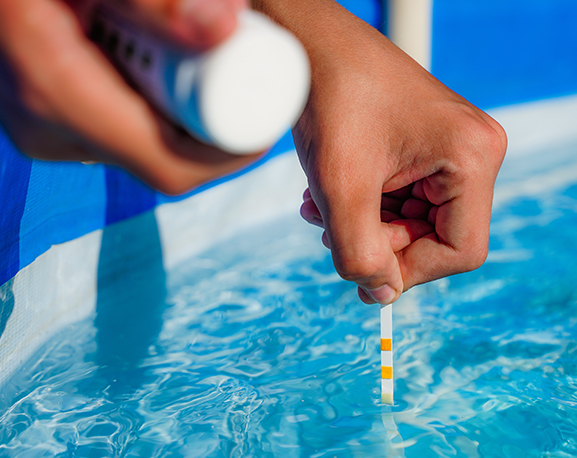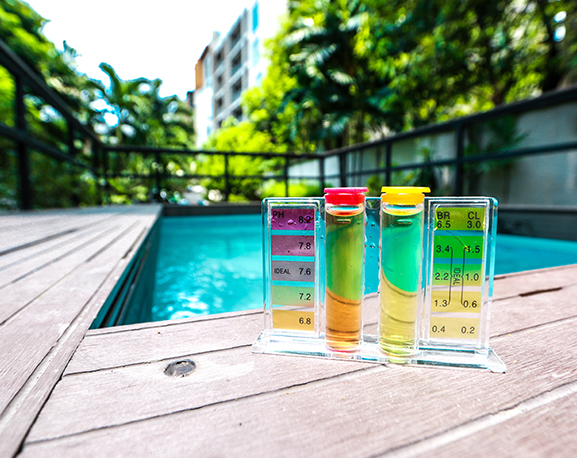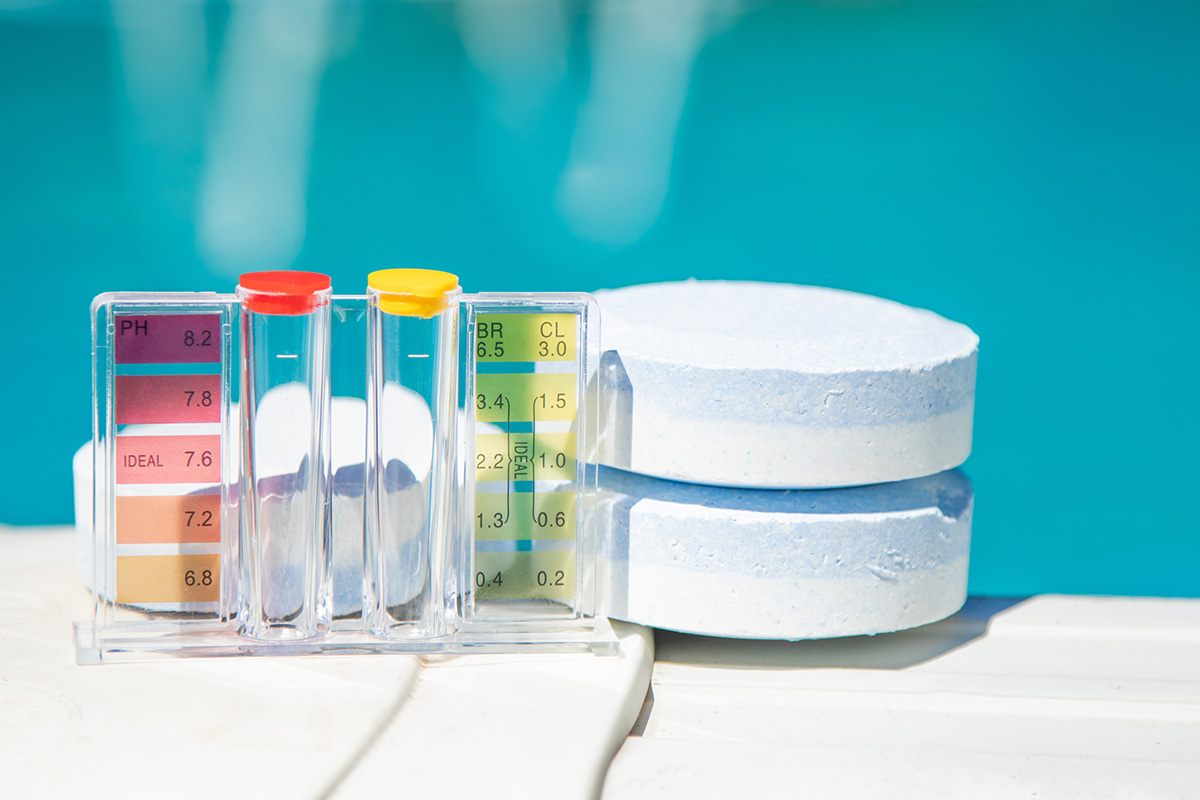Owning a pool comes with its fair share of responsibilities, and one of the most important is maintaining proper water chemistry. It might sound like a complicated task, but once you understand the basics, it becomes a manageable routine that can keep your pool clean, safe, and enjoyable for everyone. Let’s dive into the key elements of pool water chemistry, what each one means, and how to maintain the right balance.
First and foremost, the goal of balancing your pool water chemistry is to keep the water safe for swimmers and to protect your pool’s surfaces and equipment from damage. Unbalanced water can lead to a host of issues, such as cloudy water, algae growth, and even skin and eye irritation. By keeping a close eye on certain chemical levels, you can avoid these problems and extend the life of your pool.
The Key Components of Pool Water Chemistry
There are a few core factors you need to monitor and adjust regularly: pH, alkalinity, calcium hardness, and sanitizer levels. Each plays a specific role in maintaining water quality, and they often influence one another, so it’s important to consider the whole picture.
1. pH Levels
pH measures how acidic or basic your pool water is on a scale of 0 to 14, with 7 being neutral. Ideally, your pool water should have a pH between 7.4 and 7.6. This range is slightly basic and closely matches the pH of human tears, which minimizes eye irritation for swimmers.
If the pH is too low (acidic), it can corrode your pool equipment and irritate skin and eyes. If it’s too high (basic), the water may become cloudy, and chlorine becomes less effective at sanitizing the pool. To adjust pH, you can use chemicals like pH increasers (sodium carbonate) or pH decreasers (sodium bisulfate or muriatic acid).

2. Total Alkalinity
Alkalinity acts as a buffer for pH, helping to stabilize it and prevent sudden swings. The ideal range for total alkalinity is 80 to 120 parts per million (ppm). If alkalinity is too low, your pH levels can fluctuate wildly, which makes maintenance a nightmare. On the flip side, if it’s too high, it can cause scaling and make it harder to adjust pH.
To raise alkalinity, you can add baking soda (sodium bicarbonate), which is both effective and affordable. To lower it, you can use muriatic acid or a specialized alkalinity reducer.
3. Calcium Hardness
Calcium hardness refers to the amount of dissolved calcium in your pool water. The recommended range is 200 to 400 ppm. If the calcium level is too low, the water can become corrosive and damage surfaces like plaster and concrete. If it’s too high, you may see scaling on pool walls and cloudy water.
To increase calcium hardness, you can use a calcium chloride product. Lowering calcium levels is trickier; it often involves partially draining the pool and refilling it with softer water. Regular testing can help you stay ahead of any issues.
4. Sanitizer Levels
Sanitizers like chlorine are essential for killing bacteria, viruses, and other contaminants that can make swimmers sick. The most common sanitizer is chlorine, and its ideal level is between 1 and 3 ppm for residential pools. Bromine is another option, often used in hot tubs because it remains effective at higher temperatures.
To maintain sanitizer levels, you can use chlorine tablets, granules, or liquid chlorine. However, keep in mind that chlorine levels can be affected by sunlight, temperature, and the number of swimmers in the pool. That’s why many pool owners also use stabilizers like cyanuric acid to protect chlorine from breaking down too quickly in the sun. The recommended level for cyanuric acid is 30 to 50 ppm.

Other Factors to Consider
While pH, alkalinity, calcium hardness, and sanitizer levels are the primary focus, there are a few other factors worth noting to keep your pool water in top shape.
1. Shock Treatments
Even if you’re diligent about daily maintenance, your pool may need an occasional shock treatment. Shocking involves adding a high dose of chlorine or another oxidizer to destroy organic contaminants and clear up cloudy water. It’s a good idea to shock your pool after heavy use, following a rainstorm, or if you notice the water looks or smells off.
2. Phosphates and Algae
Phosphates can enter your pool through leaves, grass, and other debris. They serve as a food source for algae, so keeping phosphate levels low can help prevent algae growth. While regular sanitizing and cleaning usually do the trick, you can also use a phosphate remover if needed.
3. Water Circulation and Filtration
Good water circulation and a clean filter are just as important as chemical balance. Poor circulation can lead to dead spots in the pool where algae and bacteria can thrive. Make sure your pump and filter are running efficiently, and clean or backwash your filter regularly to keep it in good condition.
Testing and Adjusting
Regular testing is the backbone of pool maintenance. At a minimum, you should test your water weekly using a reliable test kit or test strips. Some pool owners prefer digital testers for more precise readings. Be sure to test pH, alkalinity, calcium hardness, and sanitizer levels each time, and adjust as needed based on the results.
It’s also worth having your water professionally tested at a pool store a few times a season. These tests can provide a more detailed analysis, including levels of metals like iron and copper, which can sometimes cause staining or discoloration.

Tips for Success
Keeping your pool water balanced may feel overwhelming at first, but with a consistent routine, it gets easier. Here are a few tips to help you stay on track:
- Develop a schedule. Set reminders to test and adjust your water weekly, and make it a habit to check sanitizer levels daily during peak swimming season.
- Keep a log. Record your test results and any chemicals you add. Over time, this can help you spot patterns and fine-tune your maintenance routine.
- Don’t cut corners. Using cheaper chemicals or skipping steps might save time or money in the short term, but it can lead to bigger problems down the road.
In the end, proper pool water chemistry is all about balance. By understanding how each factor works together and staying consistent with your maintenance, you can enjoy a crystal-clear pool all season long.

